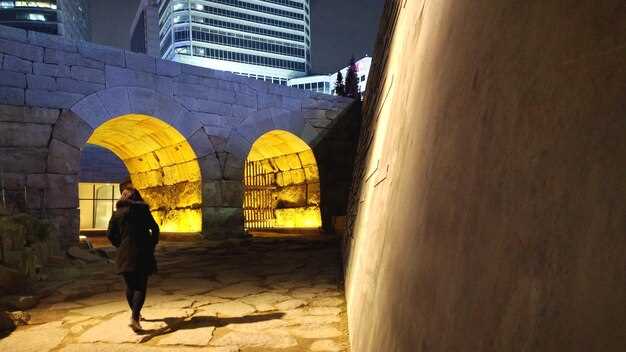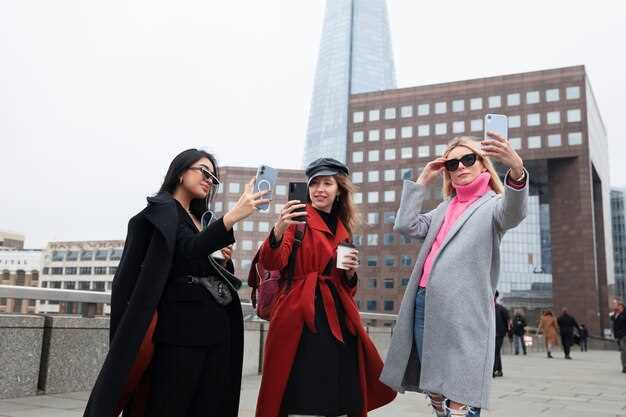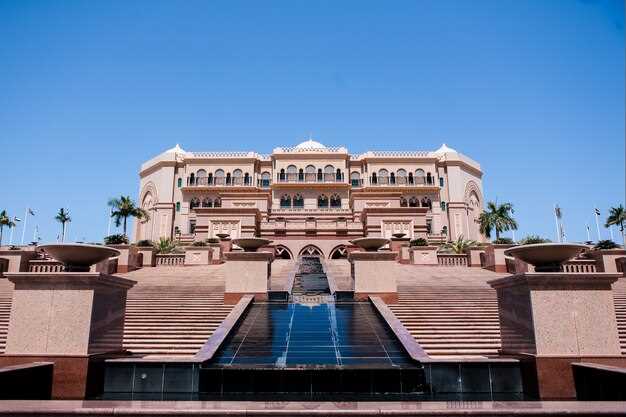
Recommendation: Start with a sunrise stroll along the Corniche and breakfast at a marina cafe, then proceed to the Sheikh Zayed Grand Mosque to witness the city’s iconic sights. This approach yields comfortable pacing and a smooth transition to the core of Abu Dhabi’s cultural and architectural gems across the emirates.
The core arrangement keeps you near water and major landmarks: five main sights, about a 4.5-hour window, and a quick 12-minute drive between stops on most days. Begin at the mosque (60–80 minutes), move to Qasr Al Hosn (40 minutes), visit Louvre Abu Dhabi (60–75 minutes), take a seaside lunch (60 minutes), then finish with a Corniche stroll to capture the skyline.
Facts: Sheikh Zayed Grand Mosque features 82 domes, 4 minarets, and a capacity around 40,000 worshippers; Louvre Abu Dhabi houses more than 600 artworks across a modern spread that blends with the sea breeze.
For a dubai comparison, this loop does show a different pace: the bustling city core here attracts many people moving between venues, yet the skyline of native skyscrapers remains visible from several viewpoints.
Alternative options include Saadiyat Island beaches, Manarat Al Saadiyat gallery, or a short desert drive to add contrast without committing to a second full day.
Practical tips: wear modest clothing, carry water, hold your belongings securely, and plan to walk 5–6 km total; use rides between sites when heat or crowds grow. Expect about 9,000–12,000 steps and keep this numbers in mind for pacing.
After you finish, hold the memory of the day and decide whether to extend your holiday with a sunset cruise or a dessert café, concluding with a view of the city’s lights and a few lingering skyscrapers reflecting on the water.
Abu Dhabi Arabian Jewel City Tour – Planning Guide
Plan a two-part day: start early at the mosque to beat the heat, then explore around the souk and khalifa district for a compact, high-value set of gems.
Choose a listed operator with government accreditation; this ensures reliable transport and a local guide, and youll receive included hotel pickup and drop-off if you request it.
Timing tips: allocate 4-6 hours for the morning loop (mosque, Corniche views, and surrounding parks) and 2-3 hours later for the souks and khalifa district; visit the mosque during opening hours to avoid crowds.
Dress and comfort: keep shoulders covered, and ensure modest attire for entry into religious sites; wear comfortable walking shoes and carry water.
Fees and inclusions: discuss inclusions before booking; many attractions list admission as included or optional; verify if the fee covers the whole visit to the listed gems or if some experiences are extra.
Accommodate their guests: design the route to accommodate different interests and mobility levels; include a turning point break at a quiet cafe along the Corniche; throughout the day maintain a steady pace to avoid fatigue.
Local flavor and international context: include a brief cultural activity such as a spice-market tasting to give guests a tangible sense of international and local flavors around the city, including dubais markets and crafts.
Getting around the city, plan short rides between stops; bring sunscreen, and ensure you have enough water; plan pickup/drop-off at a central location to simplify logistics.
Time-blocked 12-hour itinerary: precise schedule, blocking hours, and must-see order
The day begins at 8:00 AM at Sheikh Zayed Grand Mosque to catch soft morning light and avoid crowds. Wearing modest clothing is strictly required; you must comply with security checks. While you stroll between venues, you will discover layers of history and modern design. This full plan includes a good mix of venues and a clear road between stops, with amazing architecture, high quality facilities, and a well-paced tour that keeps things efficient and rewarding. You will understand how Abu Dhabi’s jewels come together to tell the city’s story, and you’ll leave with ideas for future visits in the year ahead.
- 08:00–09:30 Sheikh Zayed Grand Mosque – visiting the grand halls, towers, and reflecting pools; use the info boards for context and plan a 10–15 minute photo break before you depart.
- 09:45–11:15 Louvre Abu Dhabi – explore marquee galleries that bridge cultures and eras; including the signature domed ceiling space and several worthwhile venues within a compact loop.
- 11:30–12:15 Qasr Al Watan – palace interiors and the state rooms show; this stop helps you understand the country’s governance traditions and royal history.
- 12:15–13:15 Lunch break – choose among good venues along the Corniche or Saadiyat; options range from arabic-influenced dishes to international fare, all included for a full meal experience.
- 13:15–14:15 Saadiyat Cultural District stroll – outdoor art, public sculptures, and waterfront views; this will be a calm break to recharge before the next venue.
- 14:20–15:30 Etihad Towers Observation Deck – panoramic city views from the top floors; plan to stay 45–60 minutes and capture wide, dramatic shots of the skyline.
- 15:40–16:30 Qasr Al Hosn – the oldest stone building in Abu Dhabi; discover exhibits about the bedouin roots and the city’s growth into a modern capital.
- 16:40–17:30 Heritage Village – traditional crafts, live demonstrations, and a window into daily life in the past; great opportunities to buy handmade souvenirs (things to remember this day).
- 17:40–18:40 Corniche drive and park stop – enjoy sea breezes, low-traffic viewpoints, and sunset silhouettes of newer towers along the road, with a few ideal photo calls.
- 18:50–19:40 Emirates Palace precinct – grand exterior photos, ornate façades, and a quick coffee or tea; note the road access and valet options if you’re returning by car.
- 19:40–20:00 Optional bedouin-inspired tea and storytelling – if available, a short show with desert motifs adds a cultural finish; you can call ahead to reserve this experience or use this time to plan your future visits.
Iconic capital gems: Louvre Abu Dhabi, Sheikh Zayed Grand Mosque, Qasr Al Hosn, and more

Choose Louvre Abu Dhabi as the anchor for a full day circuit of capital gems. Like a curated conversation between continents, its galleries flow from ancient artifacts to contemporary art, and the spaces invite a relaxed stroll. Start early to enjoy cooler air and enough time to move between venues without rushing.
Inside the Louvre, plan enough time to see highlights, and bring a map of the galleries. Advice from staff: book online, check dates for special exhibitions, and aim for minimum lines. If you need a break, call the information desk; the cafés and rest spaces offer air-conditioned comfort between halls. For groups, the service can simplify transitions between rooms and ensure you stay together.
Next, head to Sheikh Zayed Grand Mosque before heat peaks. Arrive early or late afternoon to enjoy inside spaces that stay cool. Dress modestly; shoulders and knees must be covered, and visitors may borrow abayas at the entrance. Bring water and a cap for sun breaks; vehicle access is convenient near the gates, with ample parking on adjacent streets. The significance of the mosque lies in its prayer halls, marble courtyards, and serene atmosphere.
Then, walk the foundations of Qasr Al Hosn, a symbol of original city life. Its significance comes from the layers of history visible inside the restored rooms and the surrounding courtyards. After the fort, stroll to the nearby souk to feel the old market pulse; choose a bite at the adjacent restaurants, or sit in shaded spaces to rest. The site accommodates visitors with clear signposts and gentle slopes, making it a comfortable stop for all ages.
Other gems near the core include Etihad Museum, which chronicles federation through modern displays, and the Founder’s Memorial, a tranquil space for reflection. Both venues accommodate different interests and can be combined with a riverside stroll toward the Corniche. If you want a quick bite, several restaurants around the area offer cuisines from across the region and beyond.
Practical notes for a smooth day: choose a vehicle or reliable transport between sites; bring enough water, sunscreen, and a light layer for air-conditioned interiors. Keep valuables safe and in view, and plan at least a few hours between venues to absorb each place. Reserve tickets online to avoid long queues, and verify opening times and events occurring on your dates. Bring a portable charger, wear comfortable shoes to protect knees, and stay flexible to enjoy these iconic capital gems fully and responsibly.
Dubai-Abu Dhabi transfer options: coach, private car, and travel times
Choose a private car for flexibility and direct routing between Dubai and Abu Dhabi, with an air-conditioned ride that keeps you comfortable. Expect 90 minutes to 2 hours depending on traffic along Sheikh Zayed Road; during peak hours, add 15–30 minutes. This option suits you if you’re traveling with family or a small group, especially if you want to tour Saadiyat and its galleries without detours.
Coach transfers are cost-friendly and reliable, arranged through partner operators or your hotel’s desk. Plan 1 hour 45 minutes to 2 hours 30 minutes, depending on stops and traffic. For groups, reserves seating can simplify logistics; discuss with a knowledgeable team to decide which option best fits your plan.
Deciding between options requires discussing with your partner and your team, then finding what aligns with your schedule. If you’re traveling yourself, you can book direct with a service that provides arabic-speaking drivers and live updates. theres a chance to adjust the route along the coast, and you’ll see Saadiyat as you approach Abu Dhabi.
During ramadan, pick-up times often shift to respect local customs; in practice, plan morning departures and avoid late-night trips in busy periods. In this region, islam and abrahamic traditions shape respectful travel etiquette. For visitors, dress modestly and keep shoulders and knees covered in public areas to comply with local norms. If you carry visas and documents, keep copies handy; pictures of your booking and IDs can speed verification.
For a tour that includes Saadiyat Island’s cultural sites, a private car often saves time because you can stop along the way for photos and a quick coffee. For those who want a budget-friendly option, coach transfers can still handle a Saadiyat stop if requested by the partner operator; discuss it in advance to confirm availability and keep your schedule on track. Always check current travel times and traffic forecasts; theres resilience in having a backup plan, and reserves with the operator can cover unexpected delays.
To sum up, weigh comfort, cost, and timing with your partner and a knowledgeable team; find the option that aligns with your itinerary, and you’ll handle the transfer yourself with confidence.
Practical packing list and dress code for mosques, museums, and hot weather
Pack light, breathable clothing that covers shoulders and knees, and carry a lightweight scarf for mosques and museums. In hot weather, choose loose fabrics in natural fibers like cotton or linen and stick to neutral tones that suit heritage sites with gleaming white domes and beautiful marble. Plan a full day with comfortable shoes for a road tour and outdoor activity, and pick outfits that can be mixed and matched as part of your wardrobe.
For entry to sites and travel between places, keep a compact day bag with water, sunscreen, hat, and sunglasses. Include medicines and a basic first-aid kit. Have a spare pair of socks, a small towel, and a portable charger. If you arrive from the airport, aim for a plan that minimizes backtracking and leaves room for last-minute changes in your itinerary. Keep confirmation emails or tickets handy on your phone, which helps smooth entry.
Mosques require modest dress: shoulders and knees must be covered; avoid sleeveless tops, tight shorts, and transparent fabrics. For women, a scarf or shawl can cover the head when needed; men should avoid sleeveless shirts. Wear comfortable closed-toe shoes for carpeted prayer halls. The part of your outfit near the skin should stay breathable, so a light cardigan or shawl is handy.
Museums usually have strong air-conditioning, so bring a light cardigan or shawl for indoor spaces. When you discuss a city tour that includes heritage venues and nearby white facades, plan for indoor and outdoor time. Use sunglasses for glare from gleaming surfaces, and stay hydrated with a bottle of water between rooms.
Ramadan hours can affect access and schedules; some shops and eateries may shift timing. Dress modestly during this period, and be patient in bustling markets where crowds are common. If you plan to visit places with domes and white marble, arrive early to beat heat and crowds, and bring a compact snack in case you must wait between stops.
Before you depart, check the weather forecast and local advisories for heat; expect hot afternoons and cooler evenings. Choose lightweight, modular pieces that you can layer, and pack a watch and a small map for quick orientation. For those who want to see the worlds of gems that Abu Dhabi offers, plan a flexible route and discuss which places to prioritize, including the burj area if your route includes it. Remember to respect places of worship and residence districts, and keep your backpack ready for the next amazing stop on your gleaming journey.
Tickets, passes, and booking tips: skip-the-line options and combo savings

Book online before you travel to lock skip-the-line access and save with a combo that covers at least two venues on your Abu Dhabi Arabian Jewel City Tour.
Consider the Louvre Abu Dhabi and Sheikh Zayed Grand Mosque as a two-site combo; this pairing often offers a single timed-entry window for both, helping you save on charges and line time, while you admire beautiful architecture from different angles.
Look for passes that include venues youll actually visit, where youll get the most value for your time, such as Louvre Abu Dhabi, Qasr Al Hosn, and Heritage Village; spaces are limited, so choosing the least number of venues that still cover your wish can prevent wasted time and provide enough daylight for extra stops.
Timing matters: watch the clock and pick slots with at least a 60-minute buffer between stops; if you miss a window, most portals let you swap to another time if availability remains, and youll still have a chance to check the numbers for future visits.
If you travel through the city with a local driver, share your preferred times and confirm the exact entries with the operator; a vehicle can be ready at the curb, and a driver can navigate through busy routes to keep you moving from venue to venue without delays.
During Ramadan, some venues operate shorter hours; plan mornings or late afternoons and check info before you go; holiday crowds can peak on weekends, so book early and watch fees for extras and charges; avoid illegal resellers who promise faster entry but add hidden costs, and youll have space to enjoy each site with comfortable pacing.
